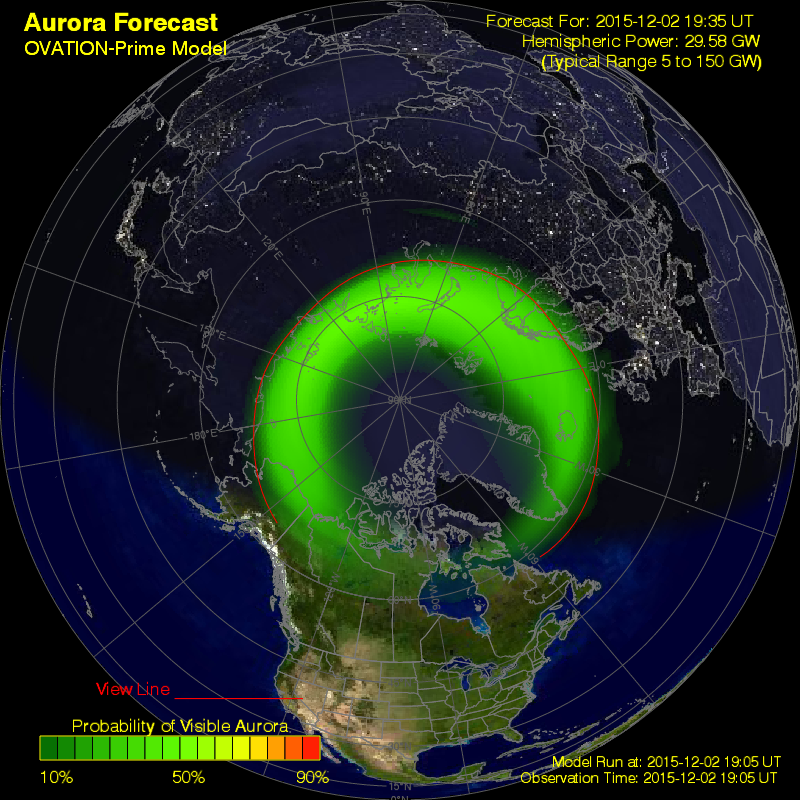

The aurora is most visible in the areas near the North and South Magnetic Poles (auroral oval). Alaska, the Scandinavian Countries (Norway, Finland, Sweden), Greenland and Canada have the most accessibility and viewing of the Northern Lights because of the higher latitudes. The lights can also be seen in the northern part of the United States and sometimes even into the southern part of the United States when the solar activity is extremely high. The solar activity tends to run in cycles of approximately 11 years.
Fairbanks, Alaska, at a latitude of 64.84°N is a great place to view these brilliant lights. The University of Alaska Fairbanks Geophysical Institute has an aurora forecast website to let you know when your chances are best for viewing of the aurora. There is a direct correlation between the probability of visible aurora and the location and intensity of the lights. The snapshot images below was a 3 on the scale that is used by the Geophysical Institute at the University of Alaska Fairbanks. The majority of the aurora is passing Alaska in this image and will continue to move clockwise around the pole. Visit the Geophysical Institute website to get a real time and hour-by-hour forecast.


There is a greater potential of solar activity during the equinoxes when the axial tilt of earth aligns the magnetic field of Earth with the magnetic field of the sun. This alignment allows them to connect and enables more of the high energy electrons to enter the atmosphere thus creating even more of the amazing auroras.
.